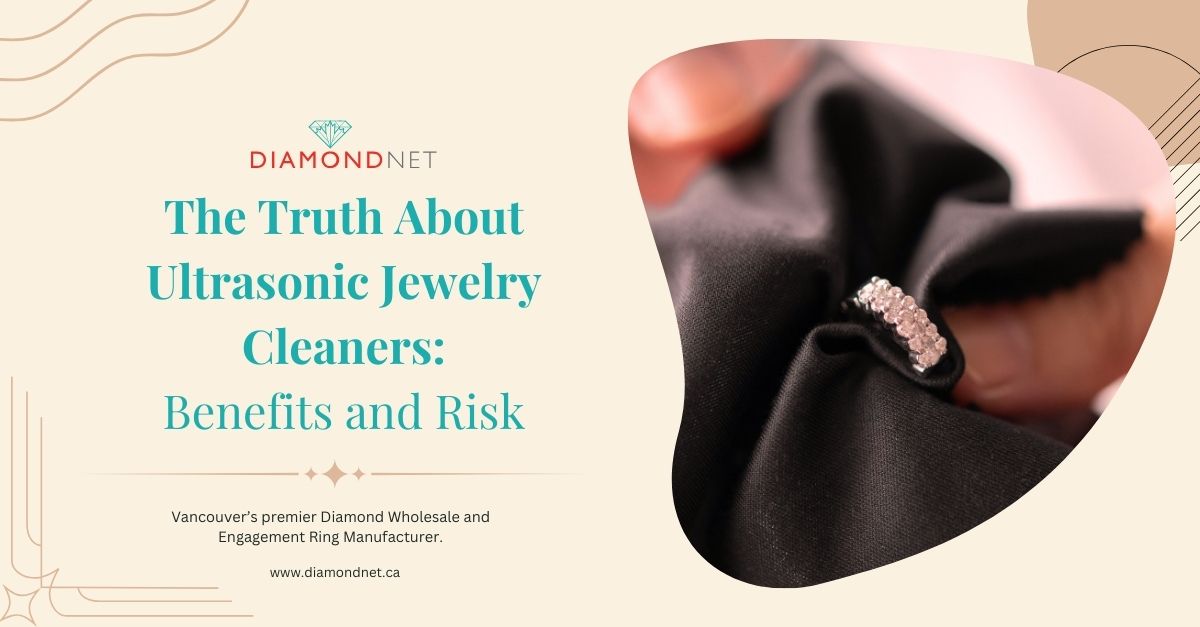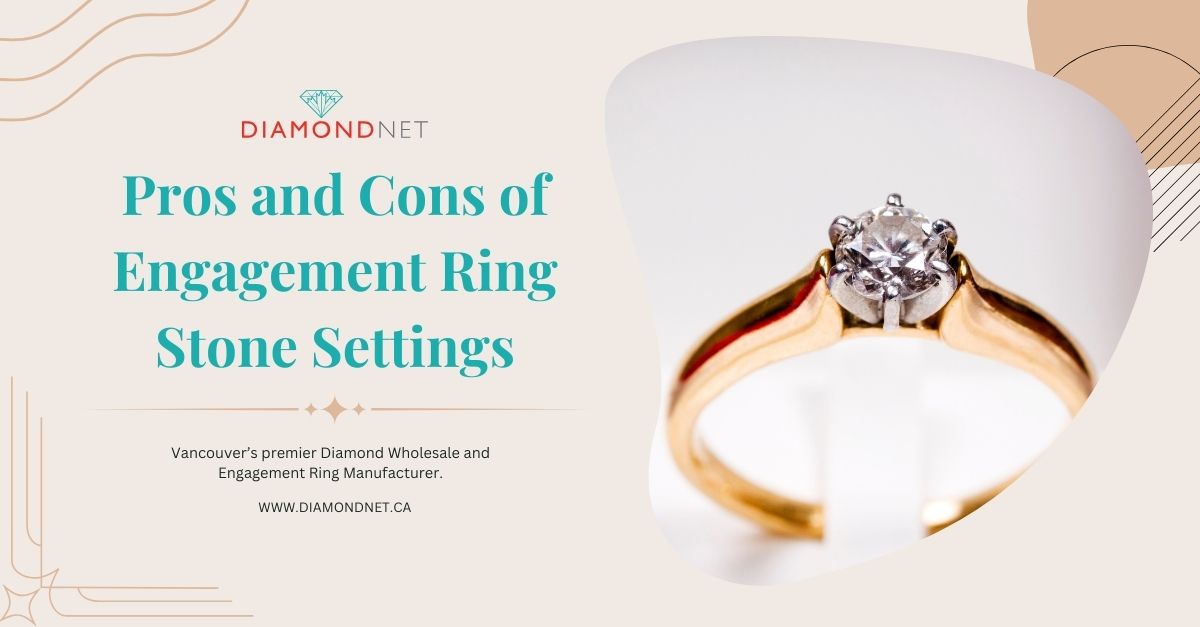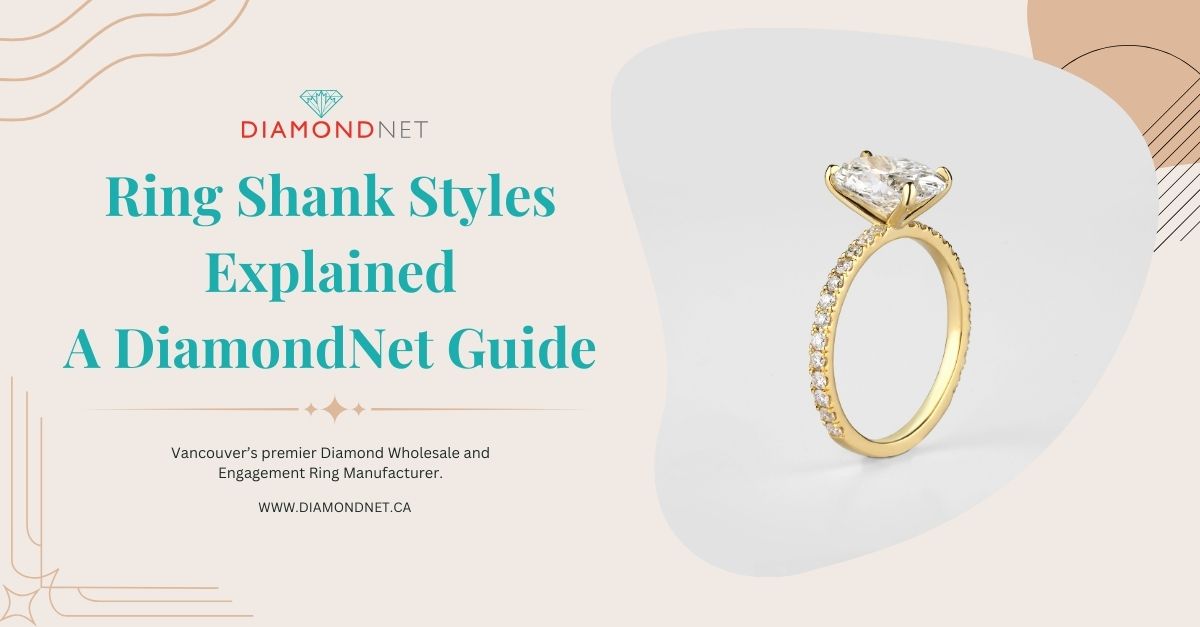Keeping your jewellery sparkling can be difficult, especially when dirt and grime settle into intricate settings. Traditional cleaning methods may not always reach these hidden areas, leaving jewellery looking dull over time.
Ultrasonic jewellery cleaners provide a powerful solution by using high-frequency sound waves to dislodge buildup and restore brilliance. But are they safe for all jewellery types? And how do they compare to professional cleaning?
This guide breaks down how ultrasonic jewellery cleaners work, their effectiveness, which materials are safe, and step-by-step usage instructions—helping you determine if they’re the right choice for your jewellery care routine.
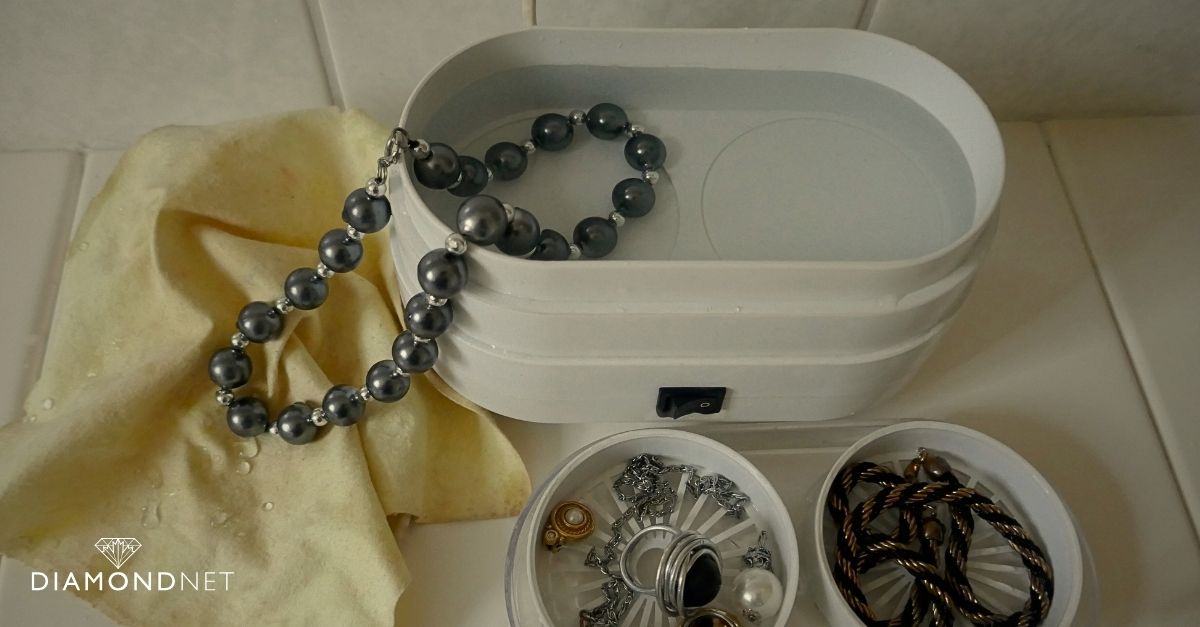
Here is the Quick Answer:
Ultrasonic jeweler cleaners use high-frequency sound waves to remove dirt from hard-to-reach areas, restoring shine without manual scrubbing. They’re great for durable materials like gold, platinum, and diamonds—but not safe for porous or delicate stones like pearls, opals, or emeralds. Use proper cleaning solutions, avoid overcrowding, and inspect pieces after each cycle to catch loose stones. For heirloom or fragile jeweler, professional cleaning is safer. Clean daily-wear items every 2–4 weeks and store pieces properly to preserve their brilliance. When in doubt, consult a jeweler—especially for high-value or sentimental pieces.
How Ultrasonic Jewelry Cleaners Work
Ultrasonic jewelry cleaners use high-frequency sound waves to remove dirt and grime from intricate settings. This process relies on cavitation, where microscopic bubbles form and collapse in a cleaning solution, creating localized pressure that lifts debris without scrubbing or damaging jewelry.
When activated, an ultrasonic cleaner generates sound waves between 20 kHz and 400 kHz, producing intense pressure that dislodges dirt from prong settings and engraved designs. Manual cleaning struggles to reach these areas, but cavitation restores brilliance effortlessly.
To enhance cleaning, ultrasonic cleaners use specialized solutions with mild detergents and anti-tarnish agents. Gold and platinum require non-ammonia formulas to prevent discolouration, while silver benefits from mild silver-cleaning solutions to reduce tarnishing. Gemstones like opals, emeralds, and pearls are too soft or porous for many solutions and should be cleaned with extra care.
Cleaning cycles last between three and ten minutes, depending on the material. Gold and platinum take three to five minutes, while silver and harder gemstones may need longer. Delicate or heirloom pieces should be cleaned in short cycles.
For fragile or high-value jewelry, professional jewelry cleaning services offer safer alternatives, especially for heirloom or intricate designs that may not withstand ultrasonic cleaning.

Which jewelry is safe for ultrasonic cleaning?
Not all jewelry is suited for ultrasonic cleaning. While these cleaners effectively remove dirt from many metals and gemstones, some materials are too fragile or porous to withstand the cavitation process. Knowing which pieces can be safely cleaned helps prevent damage and preserves their integrity.
Ultrasonic cleaners work well with durable, non-porous metals. Solid gold (10K, 14K, 18K) is generally safe, though gold-plated pieces should be avoided as the plating may wear off. Platinum is ideal due to its high density and strength. Sterling silver can be cleaned ultrasonically, but harsh solutions that cause tarnishing should be avoided.
Many gemstones can handle ultrasonic cleaning, but some require extra care. Diamonds, amethyst, topaz, and garnet are safe, though prolonged exposure to high heat should be avoided.
On the other hand, emeralds, opals, turquoise, lapis lazuli, and pearls should never be placed in an ultrasonic cleaner. Emeralds are often treated with oils that break down under high-frequency waves. Opals, turquoise, and lapis lazuli are porous and can absorb cleaning solutions, leading to permanent damage. Pearls are too delicate and may lose their lustre.
Be cautious with jewelry featuring mixed materials or intricate settings, as cavitation can loosen prongs or adhesives. For these cases, opt for safe cleaning methods for gemstones, such as using a soft brush and mild soap.
For valuable or delicate jewelry, professional jewelry cleaning services offer a safer alternative. Experts assess each piece and use specialized techniques to clean them without risk of damage.
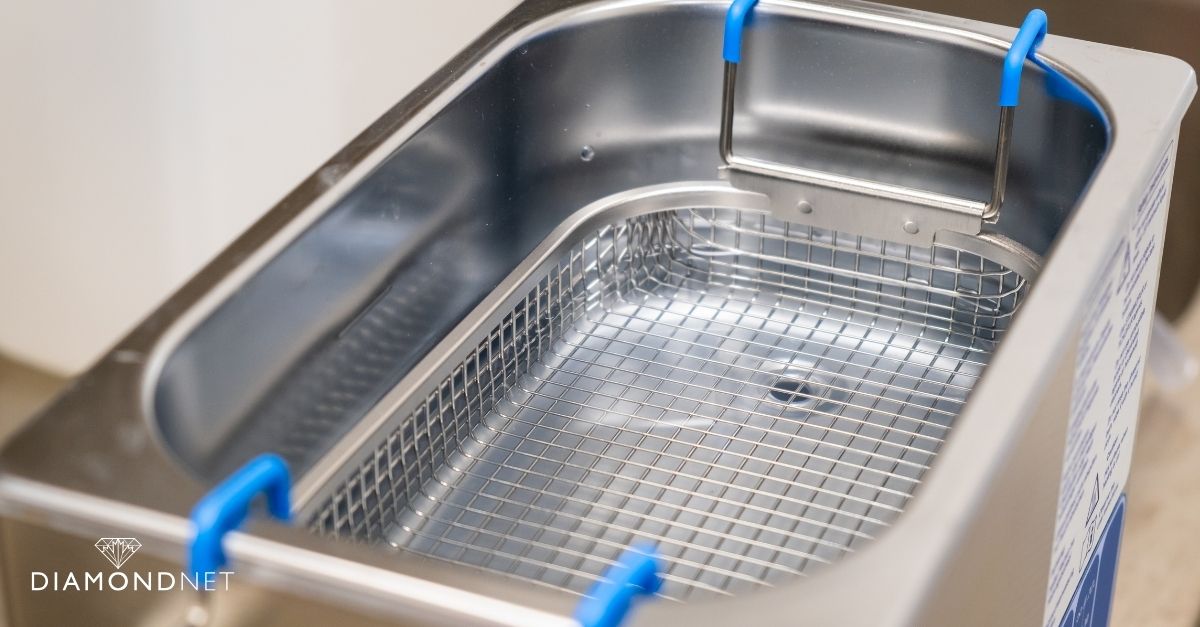
Step-by-Step Guide to Using an Ultrasonic Jewelry Cleaner
Using an ultrasonic jewelry cleaner correctly ensures a thorough clean while preventing damage. Following the right steps protects your jewelry and helps maintain its brilliance.
1. Prepare the Cleaning Solution
Fill the cleaner’s tank with the recommended solution, typically a mix of water and a specialized concentrate for metals and gemstones. Avoid harsh chemicals or ammonia-based solutions, as they may corrode metal settings or damage certain gemstones.
For gold, silver, and platinum, use a mild detergent or a professional jewelry cleaning solution.
2. Arrange the Jewelry Properly
Place jewelry in the cleaning basket without touching or overlapping, as overcrowding can reduce effectiveness and cause scratching. Clean delicate pieces separately to prevent damage from harder metals or stones.
3. Set the Right Cleaning Cycle
Most cleaners have adjustable settings. Start with a shorter cleaning cycle (3–5 minutes) for delicate pieces, increasing duration for heavily soiled items. Gold and platinum need 3–5 minutes, while silver and harder gemstones may require up to 10 minutes.
For mixed materials, use the shortest cycle to avoid loosening settings. If a second cycle is needed, allow the jewelry to cool first.
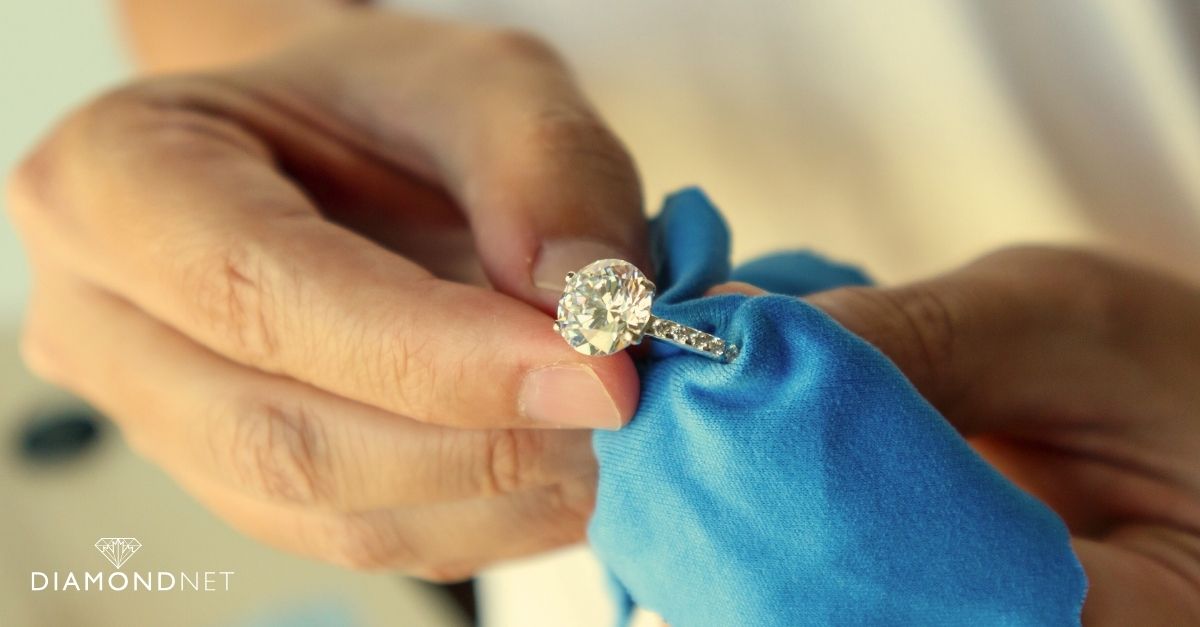
4. Rinse and Dry Carefully
Remove jewelry using plastic tweezers to prevent scratches. Rinse under lukewarm water to remove residue, then pat dry with a lint-free cloth. Use a soft brush for intricate settings with remaining buildup.
5. Inspect for Loose Stones or Damage
Check for loose stones or weakened prongs after cleaning. Ultrasonic vibrations can sometimes affect settings, especially in older or intricate pieces. If you notice any issues, seek jewellery repair services before wearing the piece again.
6. Store Properly After Cleaning
Proper storage maintains shine and prevents tarnishing. Keep jewellery separate in a soft-lined box to avoid scratches. Anti-tarnish strips help protect silver. Follow regular jewellery maintenance tips to clean your pieces every few months and check for loose stones.
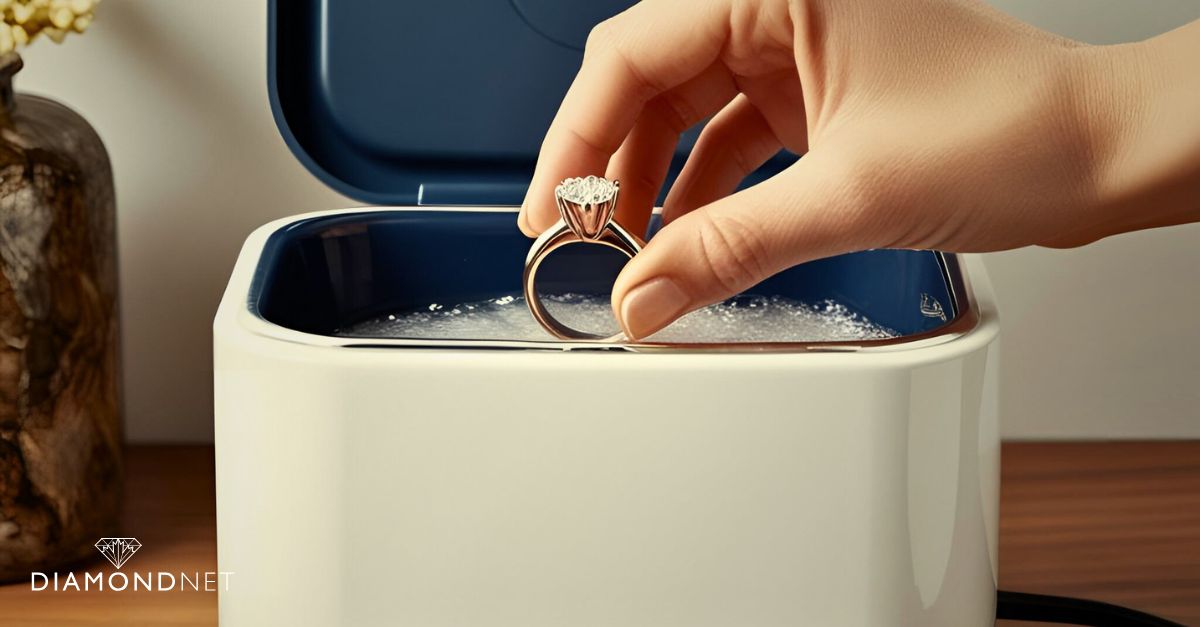
Weighing the Pros and Cons of Ultrasonic Jewelry Cleaners
Understanding the benefits and drawbacks of ultrasonic jewelry cleaners can help you decide if they are the right choice for your collection.
Advantages of Ultrasonic Jewelry Cleaners
Ultrasonic cleaners provide deep and thorough cleaning, making them ideal for intricate settings and engraved designs. Their quick and convenient cycles, often lasting just a few minutes, allow multiple pieces to be cleaned simultaneously, saving time compared to manual methods.
These cleaners are safe for most metals and hard gemstones. When used with the right cleaning solution, they help maintain jewelry’s shine without causing damage.
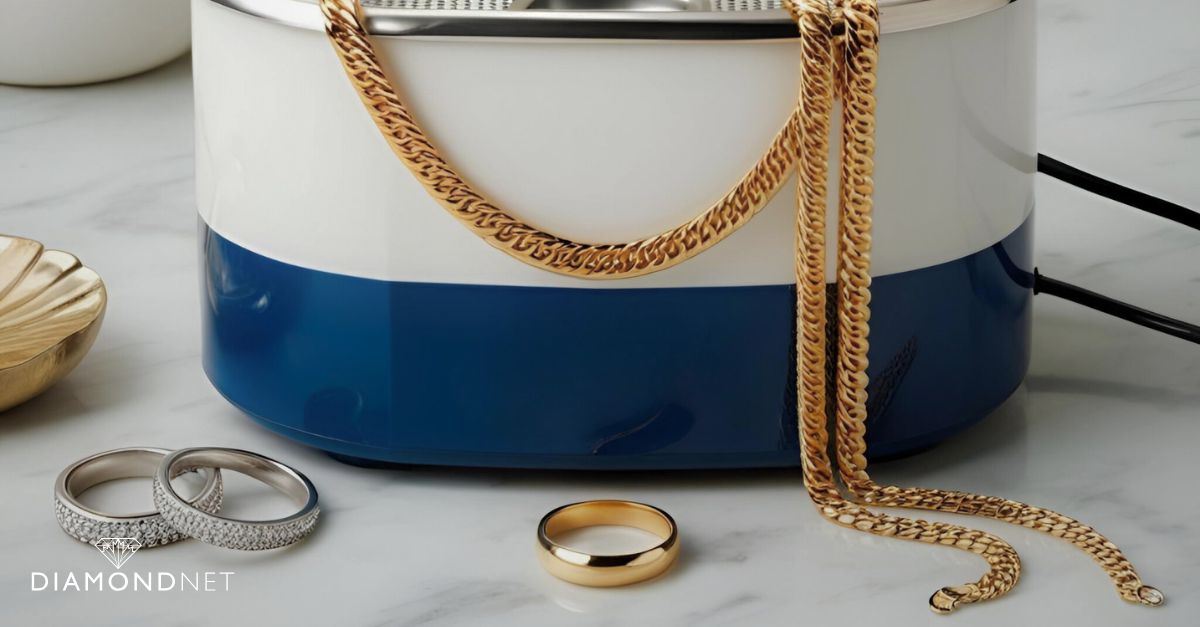
Disadvantages and Limitations
Despite their efficiency, ultrasonic cleaners have limitations. Soft or porous gemstones like emeralds, pearls, opals, and turquoise can crack or discolors under ultrasonic vibrations. Treated stones are especially vulnerable.
The cavitation process can also weaken prongs and adhesives securing stones, making older or delicate jewelry more prone to damage. If you notice loose stones, consult jewellery repair services to have the settings tightened professionally.
Ultrasonic cleaning is not suitable for organic or treated materials. Items like coral, amber, and wood can absorb cleaning solutions, leading to swelling or surface damage. Stones treated with oils or resins may degrade under high-frequency waves.
Regular maintenance is also required. The cleaner’s tank should be emptied and cleaned frequently, as dirty solutions can leave a film on jewelry, reducing its shine.
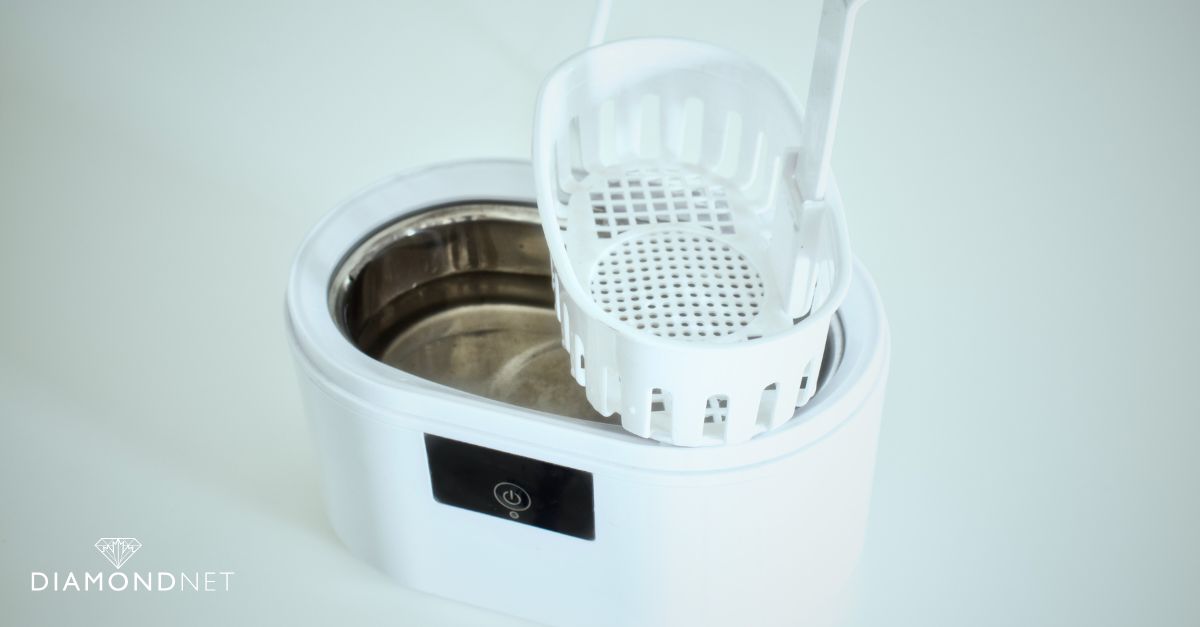
How often should you use an ultrasonic jewelry cleaner?
The right cleaning schedule helps preserve jewelry’s brilliance and longevity. Overuse of ultrasonic cleaning can cause unnecessary wear, while infrequent cleaning may allow grime to build up.
Cleaning Frequency for Different Jewelry Types
Jewelry worn daily, such as engagement rings and wedding bands, should be cleaned every two to four weeks. Constant exposure to dirt, sweat, and oils can dull their surface, making regular ultrasonic cleaning essential.
For occasional or statement pieces like cocktail rings and necklaces, ultrasonic cleaning every two to three months is sufficient. Since these pieces aren’t exposed to daily wear, they require less frequent maintenance.
Hard gemstones and durable metals, including diamonds, rubies, sapphires, gold, and platinum, can be cleaned every four to six weeks. However, gold-plated and silver jewellery should be cleaned less often to prevent tarnish or plating wear.
For high-value or antique jewelry, limit ultrasonic cleaning to once or twice a year. Pairing at-home care with professional jewellery cleaning services ensures delicate settings remain intact and well-preserved.
Conclusion
Ultrasonic jewelry cleaners provide an efficient and convenient way to restore brilliance. However, knowing which gemstones and metals are safe, following proper usage guidelines, and cleaning at the right frequency are essential to prevent damage and extend your jewelry’s lifespan.
If you notice loose stones or weakened prongs, seeking jewelry repair services can help restore structural integrity.
At DiamondNet, we specialize in expert maintenance and repair services to keep your jewelry in top condition. If you’re looking to upgrade or create something unique, our custom jewelry design services let you craft a one-of-a-kind piece that reflects your style and personality. Let us help you preserve your jewelry’s beauty for years to come.
